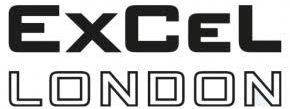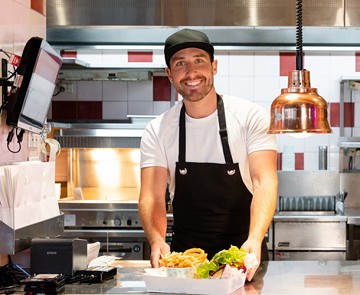The pain of a fractured tech stack – and how to cure it.
1. What is a fractured hospitality tech stack?
Today’s hospitality business relies on technology. Just about every function in a QSR, fast casual dining, or franchise business uses IT in one form or another: point of sale, payments, loyalty, marketing, online ordering apps, customer self-service kiosks, delivery, operations, reporting, kitchen management, inventory, rostering and accounting. And that’s just for starters.
These digital tools are known as the ‘tech stack’ of the organisation – the digital ‘building blocks ’that stack up to run all the functions within the business.
But none of the elements in the tech stack is an island. Just as a restaurant’s front-of-house staff need to interact with the kitchen staff, so the applications need to ‘talk to’ each other. They need to receive information from, or pass information to, each other. Each app enhances the others – as long as they can communicate and share information.
When that happens, the whole business is singing in harmony – when it doesn’t, discord reigns.
The problem is that many hospitality businesses are running on a tech stack that was never designed to work in harmony. It’s made up of a bunch of disparate apps which don’t integrate, or in other words, can’t easily ‘talk to’ each other. Instead of harmony, there’s a cacophony of voices all singing I different keys. We call this mismatch a ‘fractured tech stack’. And just like the fracture of a bone in your body, it can be very painful.
The pain of a fractured tech stack is felt in your business – in the form of unhappy customers, unproductive staff and missed opportunities.
In this whitepaper, we’ll take a look at the background and causes of a fractured tech stack and the pain is causes for your hospitality business. Then we’ll look at the remedy, and how some well-known hospitality businesses have healed the fractures and built the strong bones that support thriving success and growth.
2. What causes a fractured tech stack?
Businesses in every sector, including hospitality, use more apps than ever before. Research shows that the number of applications in the average business is growing year on year.
With more applications in use, it becomes harder to get them all working together. On average across the board, only 29% of business applications are integrated with others.
At the same time, there are ever-greater demands on business technology around integration:
- Customers demand a seamless experience. Most customer interactions touch more than one system – customers don’t know or care about your systems, they just want to transact with you in a hassle-free way, which can only happen when systems are smoothly integrated.
- The drive towards automation is increasing at a rapid pace – and automation requires integration.
- Businesses are under pressure to continually innovate – one of the biggest enables of innovation is – yes, you guessed it – integration.
So on the one hand we have strong market demand for integration, and on the other, we have an ever increasing number of different applications, which makes integration more challenging.
No wonder then that only 36% of businesses say that they provide the level of connection they would like (although on the plus side, this figure has increased in 2023, up from 30% in 2022 and just 18% in 2021). And no wonder either that 80% of organisations say that their digital transformation plans are hindered by the difficulties of integration.
One solution to integration used to be for organisations to custom-build integrations between systems, and for many years, this was a perfectly viable approach. But today, with the explosion in the number of apps, the shortage of skilled staff and the subsequent cost increase of human resources, it is simply not a cost-effective option. Added to which, the number of IT projects in the average business has increased by 41% just from 2022 to 2023, so there is more demand on a dwindling number of skilled IT resources.
In summary, we have more apps in use, more customer demand for integration, and less resources available to build integrations – creating the perfect storm for a fractured tech stack.
3. What does a fractured hospitality tech stack look like?
In short – not pretty.
A fractured tech stack can show itself in many different ways in your business, but some of the more common symptoms are:
- Your third party loyalty systems don’t integrate smoothly with your in-store point of sale or kiosks, or your other ordering systems, such as your website or delivery partner apps. That means that customers can’t earn and burn their loyalty points across multiple channels.
- You have to update your menus and pricing in multiple places for different systems. Rather than your systems sharing a single view of menu and pricing, each has its own data, meaning you need to update individual menus across delivery partners, online, apps and POS, rather than being able to do it in one spot for all systems.
- Your front of house systems can’t send data to your back of house – for example, you can’t get the sales data from your POS into your accounting, inventory management or staff rostering apps.
- It’s difficult to get the data from your operational systems – POS, loyalty, inventory for example –into your data warehouse or reporting system. You have to reformat, convert and manipulate the data before you can store and access it for business insights.
These symptoms have a negative impact on your business:
- Customers see you as a less attractive option and potentially move away to one of your competitors.
- Different menus and pricing leave customers feeling confused, or even cheated, and you lose their business.
- Multiple sources of pricing data could mean that you’re losing money by undercharging.
- Sales data is not passed swiftly to inventory, and you run out of key stock items, leading to lost sales and dissatisfied customers.
- Your operational data is not integrated with your reporting, information is out of date, hampering sound decision making.
- If change always requires system updates, you can’t be agile and innovative – and risk losing market share.
- Manual integrations take time and interfere with growth.
All of which translates, ultimately to unhappy customers, lower revenue and lack of profit. The impact of a fractured tech stack can be felt throughout your business ecosystem:
- By your customers, who are faced with inefficient service, a lower level of interaction with your brand and ultimately dissatisfaction. and not having the functions they demand.
- By your front of house staff, who have the frustration of seeing first-hand the impact on customers and who don’t have the tools to be able to provide a better service.
- By your kitchen, who are ‘working blind’ without the information they need to produce meals efficiently.
- By your back of house/head office staff who cannot implement the innovations they know are needed to grow the business.
- By your IT team, who are under-resourced and running just to stand still.? By your shareholders, who want to invest in profitable concerns.
If you’re suffering from a fractured tech stack, it’s time to take action. Doing nothing, or the ‘smile and cope with the pain’ approach is not a viable long term option - in today’s world, failure to digitally transform is often failure full stop. Businesses, including hospitality, survive and thrive based on their ability to embrace technology for customer interactions and internal efficiencies.
4. What can you do about a fractured tech stack?
The antidote to a fractured tech stack is an integrated tech platform.
An integrated platform brings applications together by design. That means that they have been designed and built to work together from scratch, with ‘native integration’. They don’t have to be glued together after the event or moulded to fit each other – the integration is built in so that the different apps can exchange data smoothly and seamlessly. For hospitality businesses, an integrated tech stack will incorporate apps including point of sale, loyalty, marketing, delivery, online ordering, kiosks, back of house, kitchen management, reporting and analytics.
It will also provide pre-built, deep integrations to key 3rd party applications that are outside of the platform. A good integrated tech platform will include Application Programming Interfaces (APIs)that enable seamless interaction between the platform and selected partners. This means that you do not have to build and maintain integrations, they are there, as part of the platform, ready for you to use.
Running your hospitality business on a tech platform enables you to operate efficiently, share data, enhance customer service, scale and adapt to the ever-changing demands of the hospitality sector.
5. What does an integrated tech platform look like in practice?
The beauty of the integrated tech platform is that it can look like whatever your business needs to function effectively and efficiently.
That might be linking sales and inventory data, for automated re-ordering. It might be having your menu in one place and being able to access it from all channels – in-store and online, so that you never have any discrepancies. It could be linking inventory to your online ordering, so customers are not shown items that are out of stock. Maybe for you, it will be having a self-service tablet or kiosk that sends customer orders direct to the kitchen, reducing errors and speeding up production. Or the same for online third-party orders, eliminating the messy business of staff receiving them and having to re-key the data. It might be having loyalty data stored in one place so that customers can earn and burn points no matter how they’re interacting with you. It could take the form of linking your POS data to your rostering app, to automatically plan staffing levels in line with sales patterns.
Here's how leading QSR and Fast Dining restaurants are using their integrated tech platform:
Healthy Burger restaurants Grill’d use their Redcat tech platform to integrate Uber Eats orders directly with their POS, eliminating the need for a dedicated Uber Eats terminal and for staff to re-key orders. Grill’d rapidly saw faster order processing, more counter space and 100% order accuracy, increasing productivity and customer satisfaction. They get all the benefits of the increased orders that Uber Eats generates, without having to worry about processing overheads.
Chicken specialists Nando’s leverages the power of integration to ensure they have a loyalty program their customers love: “Our loyalty program highlights our customer focus and commitment to continual innovation particularly leveraging technology. The Redcat system streamlines the way we handle this program and has delivered a quick return on investment.”
Boost Juice, the world’s favourite juice bar, used their hospitality tech platform to introduce a customer favourite – the ‘Order Now’ app. They harnessed the power of Redcat’s integrated loyalty option to build the app that enables customers to find their nearest Boost store, and select and order their Boost in advance, nominating their preferred pickup time. The app is fully integrated with Boost’s POS systems so online orders are treated just like in-store transactions increasing productivity and reporting accuracy.
Franchise operator ChaTime has brought the delights of bubble tea to Australian tea-afficionados, with the help of an integrated tech platform: they have incorporated their recipes into the POS, ensuring that their tea-ristas deliver the same delicious flavour every time. They’ve also linked their POS data to digital signage, for highly responsive marketing: “If a store is falling short on sales targets, we know about it in real time and can take rapid action, by automatically pushing out an offer to be displayed in that store. It gives us a fantastic edge in managing our store network and helping each franchisee reach peak performance.”
6. The bottom line
What all of these successful hospitality brands have shown is that using an integrated tech platform is the cure for the fractured tech stack, and delivers massive benefits:
- Increased productivity
- Streamlined kitchen operations
- Better business decisions
- Recipe management
- Effective personalised marketing
- The ability to adapt rapidly
- Order accuracy
- Efficient management of scheduling and payroll
- Innovation
- Cost savings
- Increased sales
- Better customer experience
To discuss how a technology platform could take away the pain of your fractured tech stack, talk to the hospitality IT platform experts at Redcat. We’ll help you move from the pain of fracture to thegains of an integrated platform.







